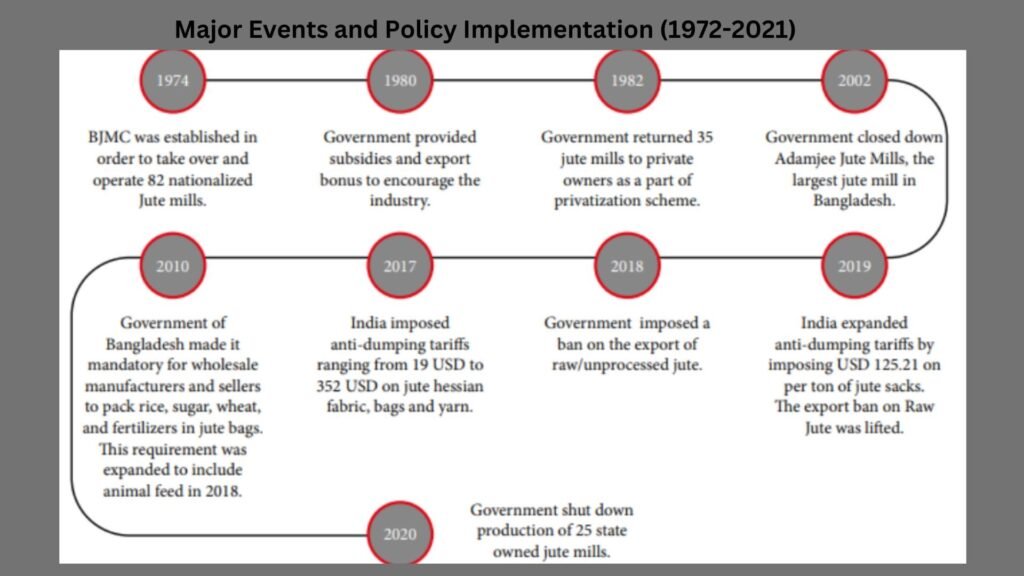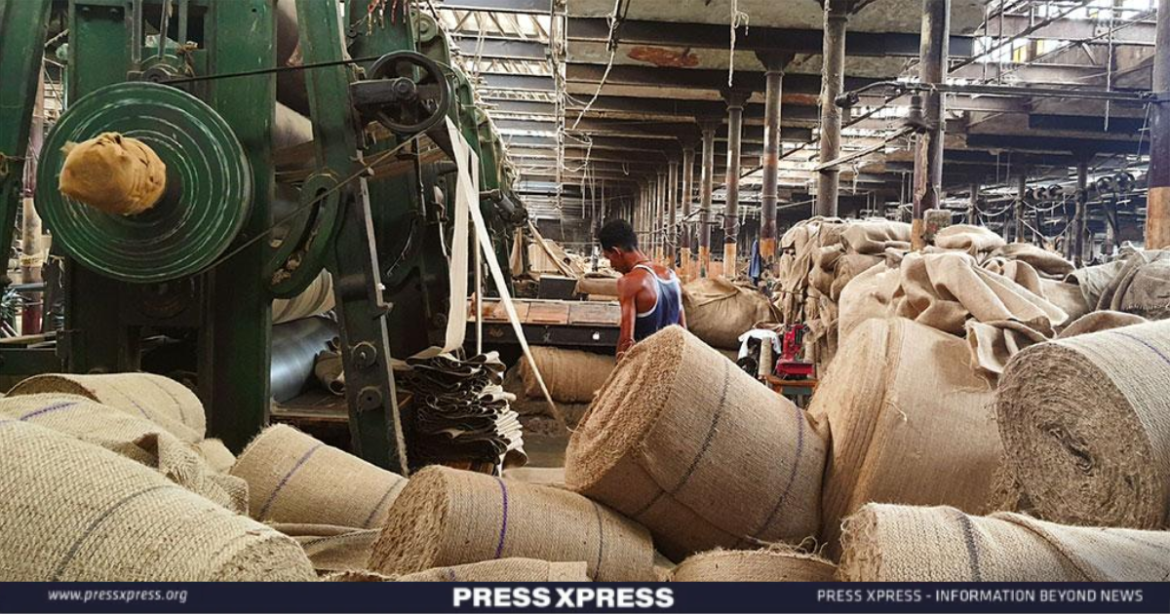The jute industry has, undoubtedly, been an indispensable part of our country’s design — historically, culturally, and even economically.
However, the government’s recent decision to disburse incentives for jute production is laudable. In a bid to rehabilitate jute cultivation, the government has announced a significant initiative to support jute farmers and enhance jute cultivation across the country.
You can also read: Bangladesh Bank Launches Currency Swap with Banks to Boost Reserves
A total of Tk 74.9 million (7.49 crore) will be provided as incentives to 3,36,600 small, marginal, and medium farmers. Each farmer is set to receive one kilogram of BJRI Tosha Pat-8 (Robi-1) seeds for one hectare of land under jute cultivation. This move is expected to have a positive impact on jute production and contribute to the growth of the jute industry in Bangladesh. The disbursement of these incentives will commence at the field level in the near future. However, this initiative reflects the government’s commitment to supporting the agricultural sector and promoting the cultivation of jute, a vital crop for the country’s economy.
Govt Incentives 2024 for Jute
- Tk 74.9 million (7.49 crore) allocated for jute production incentives
- Aim: Rehabilitate jute cultivation and support jute farmers
- Beneficiaries: 336,600 small, marginal, and medium farmer

Incentives And Policy
Jute, often referred to as the ‘Golden Fiber’ of Bangladesh, holds a prominent position in the country’s agricultural landscape. Currently, Bangladesh boasts an annual jute production of 1.349 million metric tons. This cash crop serves as a cornerstone of the nation’s economy, serving as a significant export commodity. Even preceding the emergence of ready-made garments (RMG) as a major export item for Bangladesh, jute held sway as the primary exported commodity. Under the Awami League (AL) government, consistent efforts have been made to prioritize the economic growth of Bangladesh, with particular emphasis on bolstering the jute industry as a vital export sector. The government has spearheaded various initiatives aimed at bolstering the reputation of jute both domestically and internationally.

In the preceding year, Bangladesh introduced a 12 percent cash incentive for the export of jute goods such as hessian and sacks, along with a 7 percent incentive for jute fibers like yarn and twine. Additionally, a 20 percent subsidy is extended for the export of carbon and jute particleboards derived from natural fibers.
Regarding fiscal incentives, companies engaged in jute product manufacturing are subject to a 10% income tax rate. For individual taxpayers, the maximum tax rate is also capped at 10%. Moreover, there exists a reduced rate of Tax Deducted at Source (TDS) or withholding tax for export earnings, set at 0.5%, in contrast to the standard rate of 1.0%.
Global Jute Market Highlights
Market Size and Growth:
- The global jute bag market size surged to USD 2.3 Billion in 2021, with expectations to reach USD 3.8 Billion by 2027, boasting a projected CAGR of 8.94% during 2022-2027 (imarcgroup).
- In 2020, the global jute bag market was valued at USD 2.7 Billion.
- Growth is propelled by the increasing adoption of jute bags due to their biodegradability, durability, low cost, and high strength.
Consumption:
- Top jute-consuming countries include India (2.1 Million MT), Bangladesh (1.4 Million MT), and Pakistan (0.091 Million MT), accounting for 90% of global consumption (IndexBox).
Production:
- Worldwide jute and jute fiber production totaled approximately 3.9 Million MT, with an average annual growth rate of 1.8% from 2007-2018.
- Leading producers are India (2.1 Million MT) and Bangladesh (1.6 Million MT), comprising 93% of global production (IndexBox).
Exports:
- Global jute exports amounted to USD 210 Million in 2018, with Bangladesh and India dominating, accounting for nearly 84% of total exports.
- Notable growth was observed in Malaysia (33.3%), Belgium (6%), and Tanzania (1.5%) (Global Trade Mag).
Imports:
- Pakistan (0.091 Million MT) and India (0.064 Million MT) are the largest importers of jute and jute fibers, sharing 53% of total imports.
- Jute imports totaled USD 197 Million in 2018, with a relatively stable trend (Global Trade Mag).

Product of the Year 2023
As a tangible display of support, she officially declared jute as the product of the year in 2023, further symbolizing her dedication by wearing sarees crafted from this resilient and eco-friendly material.
Emphasizing the importance of international backing to enhance the visibility of jute in global markets, State Minister for Foreign Affairs, Md Shahriar Alam, highlighted the government’s prestigious designation of jute as the “Product of the Year 2023.”
“The diverse range of applications, from high-value activated charcoal to advanced products like geo-textiles, derived from jute, underscores our responsibility to disseminate this knowledge widely. It is crucial that we seize this opportunity to position jute as the ‘fiber of the future’ in line with the global pursuit of a green growth strategy,” said the state minister.
Despite Bangladesh’s significant export of jute products to 135 countries, including major markets such as the US, Europe, Australia, and South Korea, the total earnings amount to a relatively modest $912 million.
Amid the era of sustainable progress, the Jute Directorate of Bangladesh is actively engaged in promoting the international appeal of environmentally conscious jute and its derivatives. Their initiatives encompass a comprehensive strategy, providing policy support to various stakeholders—from jute growers and manufacturers to entrepreneurs focusing on versatile jute goods and entities involved in jute product exports.


